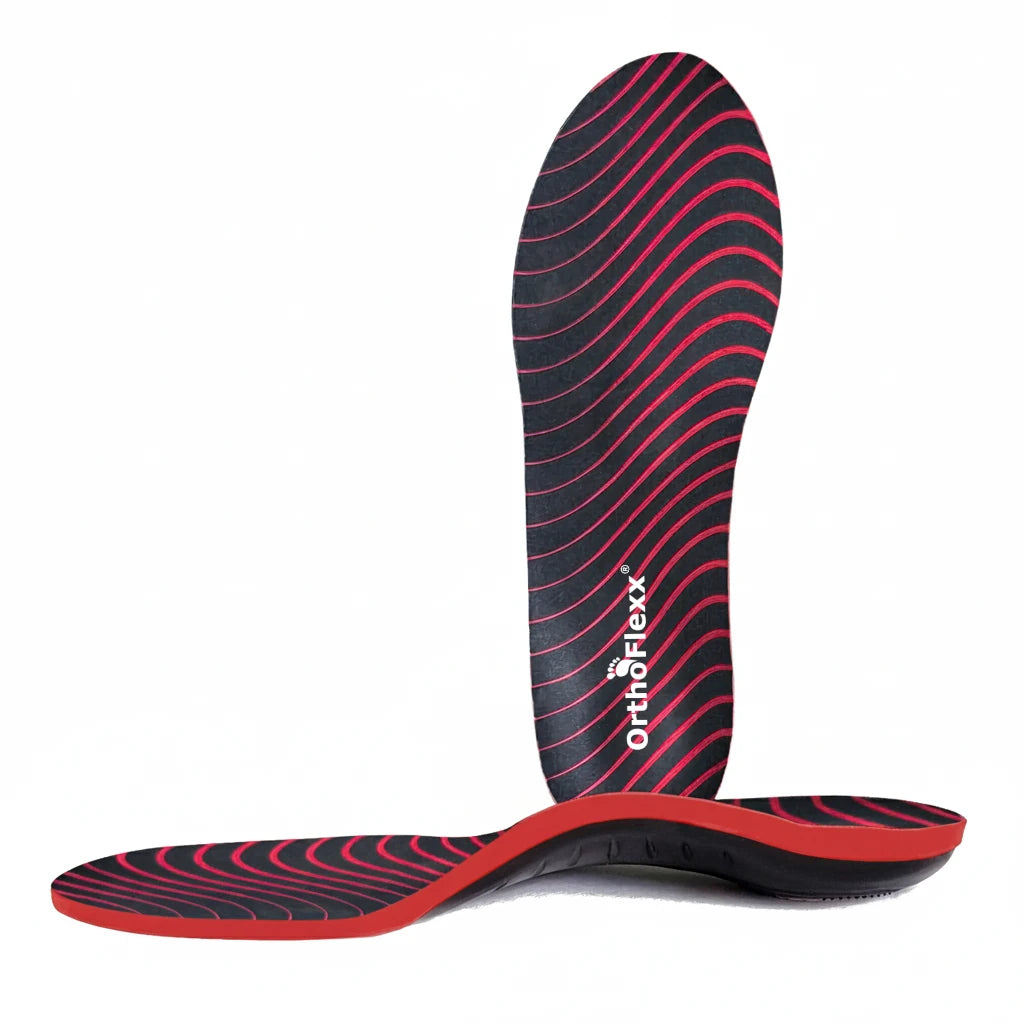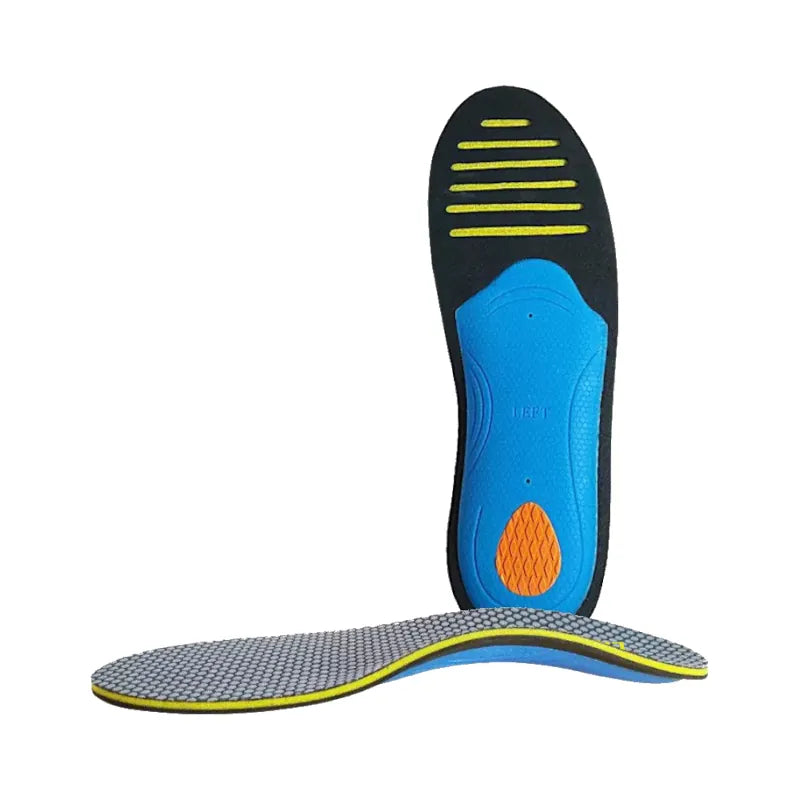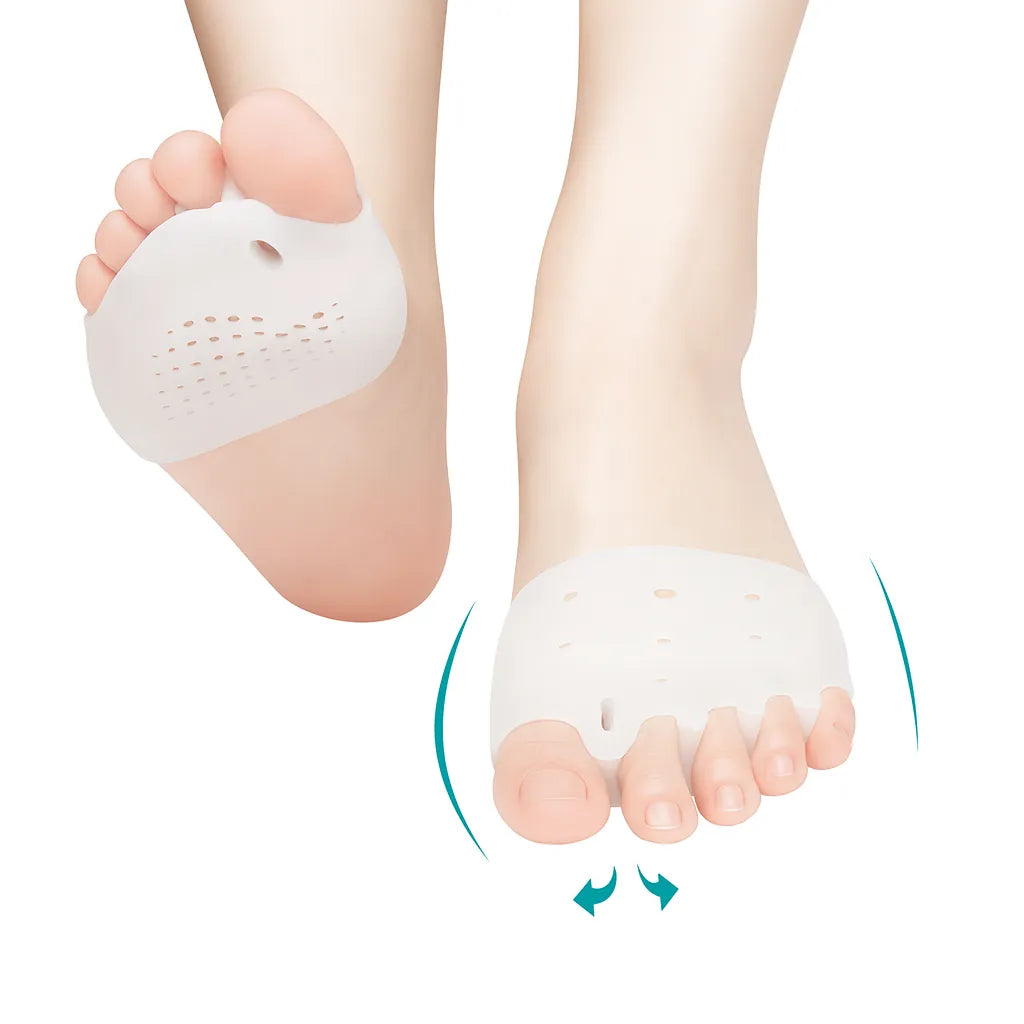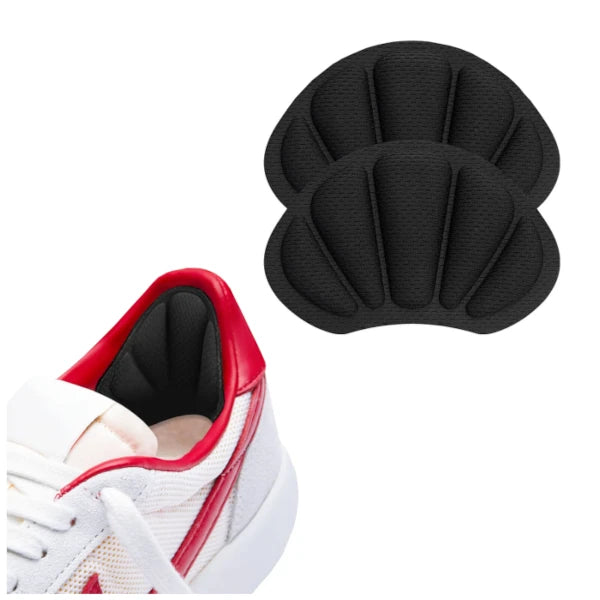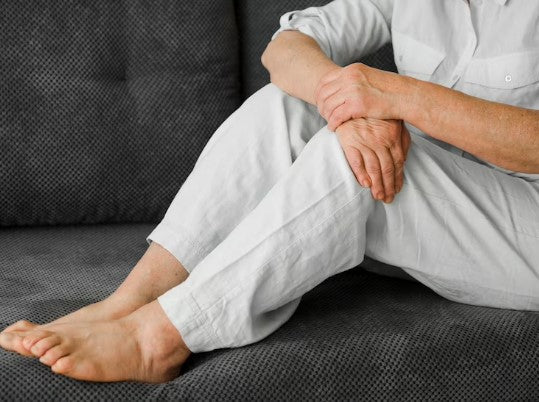
Can flat feet cause knee pain?
Share
The short answer is yes. Let’s dig into this theme which affects many people's lives. Flat feet, also known as fallen arches, are a common condition where the arches of the feet flatten out and contact the ground directly.
We are going to find out how this affects the knee joint.
Flat feet and knee pain, how much related?
It is well known inside the medical community, that people with flat feet are more disposable to injuries. Flat feet affect permanently the biomechanics of the lower limbs, which can have a significant impact on the joint we are talking about.
To better understand, we’re going to explain to you briefly the knee joint anatomy. The knee articulation is the largest and one of the most complex in the body, is made up of several structures including bones, cartilage, ligaments, and muscles.
The bones that form the knee joint are the femur, tibia, and patella. The femur is the thigh bone, the tibia is the shinbone, and the patella is most commonly known as the kneecap.
All of these bones are held together by ligaments, which are tough bands of tissue that connect the bones to each other.
The main ligaments in the knee are the Medial Collateral ligament (MCL), Lateral Collateral ligament (LCL), Anterior Cruciate ligament (ACL), and Posterior Cruciate Ligament (PCL).
Another structure we mentioned above is cartilage, a smooth tissue that covers the ends of the bones and allows them to glide over each other smoothly. Last but not least, the muscles attach to the bones and help to move the joint
, and the main muscles responsible for moving this joint are Quadriceps, Hamstrings, Abductors, and Adductors.
For people with flat feet and feeling knee pain, it’s very important to understand that when you walk, run, or jump, lower limb biomechanics are altered.
In a person with normal arches, the foot is designed to efficiently absorb and dissipate forces and provide stability when the heel hits the ground.
The arch of the foot acts like a spring, which helps to distribute the weight of the body evenly across the foot. However, for a person having flat feet, the arch of the foot is collapsed, and the foot rolls inward excessively.
This altered alignment defined as overpronation can lead to a complete misalignment of the lower limbs, affecting knee health.
When a person overpronates, the tibia (shinbone) rotates inward, and the knee articulation moves toward the midline of the body, provoking a dangerous movement that we call a valgus of the knee.
This wrong movement pattern, causes the knee to move inefficiently leading to increased stress in some structures like the ACL and MCL.
It can also lead to abnormal wear and tear on the cartilage and meniscus, causing knee pain and injuries that will impair your quality of life, and some of them will require surgery.

Susceptible injuries for flat feet w/ knee pain
Patellofemoral pain syndrome (PFPS) is a common condition among teenagers and women mostly, but not exclusive to those. It’s characterized by pain behind or around the kneecap.
This condition is often caused by overuse, poor alignment of the lower limbs, or a combination of both.
When a person with flat feet overpronates, the alignment of the lower limbs can be altered, which can lead to increased stress on the patellofemoral joint. This increased stress can cause pain and inflammation in the joint, leading to PFPS.
Meniscal tears are another common knee injury that can be caused by flat feet. The meniscus is a C-shaped piece of cartilage that acts as a shock absorber between the femur and tibia.
For a person with flat feet, the alignment of the lower limbs can be altered, which can cause abnormal wear and tear on the meniscus.
Over time, this abnormal wear and tear can lead to a tear in the meniscus, which can cause pain, swelling, and limited mobility in the knee joint.
ACL injuries are also more common in people with flat feet. The ACL is one of the main ligaments in the knee joint and it provides stability to the knee by preventing the tibia from moving forward excessively in relation to the femur.
When a person with flat feet overpronates, the alignment of the lower limbs can be altered, which can put increased stress on the ACL.
This increased stress can cause the ACL to tear or rupture, which can lead to knee instability and pain.
In addition to these specific knee injuries, flat feet can also lead to general knee pain and discomfort. When a person overpronates, the muscles around the knee may have to work harder to stabilize the joint, which can cause fatigue and pain.
How to treat?
In this specific case, treatment for knee pain caused by flat feet typically involves addressing the biomechanical issues that are causing the pain.
This can include wearing supportive shoes or orthotics, which are custom-made shoe inserts designed to support the arch of the foot and correct overpronation.
Physical therapy can also be very helpful in strengthening the muscles around the knee and improving the alignment of the lower limbs, correcting your wrong movement pattern.
In some cases, surgery may be necessary to repair a torn ligament, damaged cartilage, or even a ruptured meniscus.
Prevention of these injuries should start even without feeling pain, as soon as the person detects flat feet.
This can be achieved through exercises that not only strengthen the muscles of the foot, ankle, and leg but also give them stability.
It is also a good idea to wear supportive shoes and to avoid activities that put excessive stress on the knee joint, such as running on hard surfaces or jumping on concrete.
Always contact your healthcare provider even before pain or injury, as they can do a proper evaluation and give you a prevention plan for your specific needs. Every person is different and their condition should be evaluated and managed accordingly.
So, if you have flat feet and are experiencing knee pain or discomfort, it is important to seek treatment from a medical professional who can help you address the underlying biomechanical issues and prevent further injury.
Author Bio

Inês Pinheiro
Certified Physiotherapist for Shoulder and Knee Injuries
Inês is a skilled physical therapist with a special interest and extensive experience in working with athletes, specifically football players and also neurologic patients.
References
- DeCarlo M, Dekker TJ, Federer AE, Lee SJ, Scholten P, Flemister AS. Flatfoot in the adult. Foot Ankle Int. 2018 Jan;39(1):56-63. doi: 10.1177/1071100717736439. Epub 2017 Oct 19. PMID: 29048216.
- Malliaras P, Cook JL, Kent P. Reduced ankle dorsiflexion range may increase the risk of patellar tendon injury among volleyball players. J Sci Med Sport. 2006 Dec;9(6):304-9. doi: 10.1016/j.jsams.2006.05.009. Epub 2006 Sep 5. PMID: 16950140.
- Brouwer GM, van Tol AW, Bergink AP, Belo JN, Bernsen RM, Reijman M, Pols HA, Bierma-Zeinstra SM. Association between valgus and varus alignment and the development and progression of radiographic osteoarthritis of the knee. Arthritis Rheum. 2007 Mar 15;56(3):1204-11. doi: 10.1002/art.22515. PMID: 17345730.
- Williams DS, McClay IS, Hamill J. Arch structure and injury patterns in runners. Clin Biomech (Bristol, Avon). 2001 Nov;16(9):341-7. doi: 10.1016/s0268-0033(01)00008-7. PMID: 11511104.
- Besier TF, Gold GE, Beaupré GS, Delp SL. A modeling framework to estimate patellofemoral joint cartilage stress in vivo. Med Sci Sports Exerc. 2005 Jul;37(7):1924-30. doi: 10.1249/01.mss.0000177221.15804.6b. PMID: 16015127.
- Butler RJ, Marchesi S, Royer T, Davis IS. The effect of a subject-specific amount of lateral wedging on knee mechanics in patients with medial knee osteoarthritis. J Orthop Res. 2007 Dec;25(12):1496-504. doi: 10.1002/jor.20435. PMID: 17640024.
- Mueller MJ, Host JV, Norton BJ. Navicular drop as a composite measure of excessive pronation. J Am Podiatr Med Assoc. 1993 May;83(5):198-202. doi: 10.7547/87507315-83-5-198. PMID: 8507649.
- Laughton CA, Davis IM, Hamill J. Effect of strike pattern and orthotic intervention on tibial shock during running. J Appl Biomech. 2003 Nov;19(4):153-68. doi: 10.1123/jab.19.4.153. PMID: 14620799.
- Kaminski TW, Hartsell HD, Ferris EJ. A review of biomechanical differences between neutral and valgus knee alignment during squatting in healthy and pathological populations. J Strength Cond Res. 2004 Nov;18(4):1052-7. doi: 10.1519/1533-4287(2004)18<1052:arobdb>2.0.co;2. PMID: 15574092.
